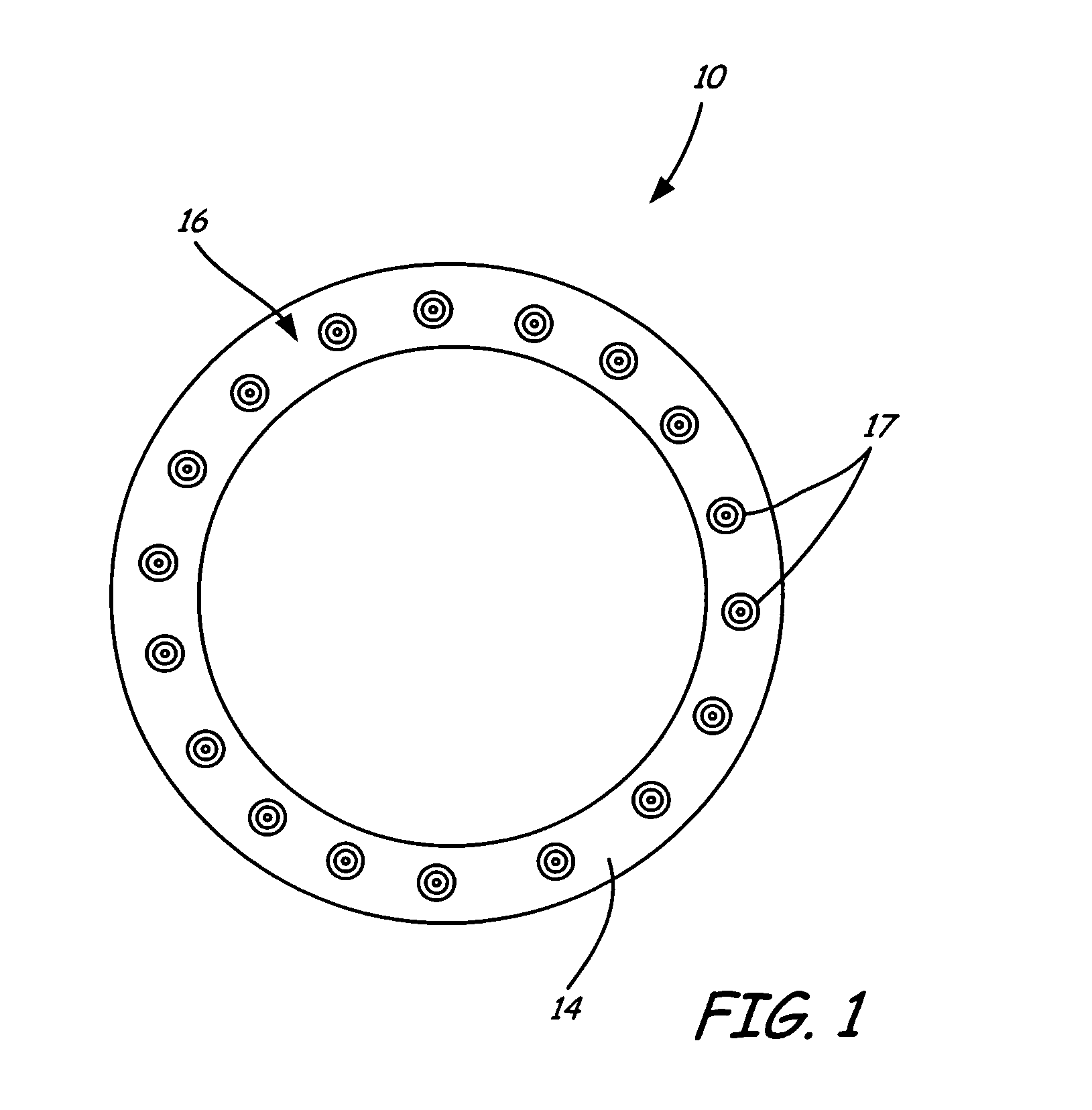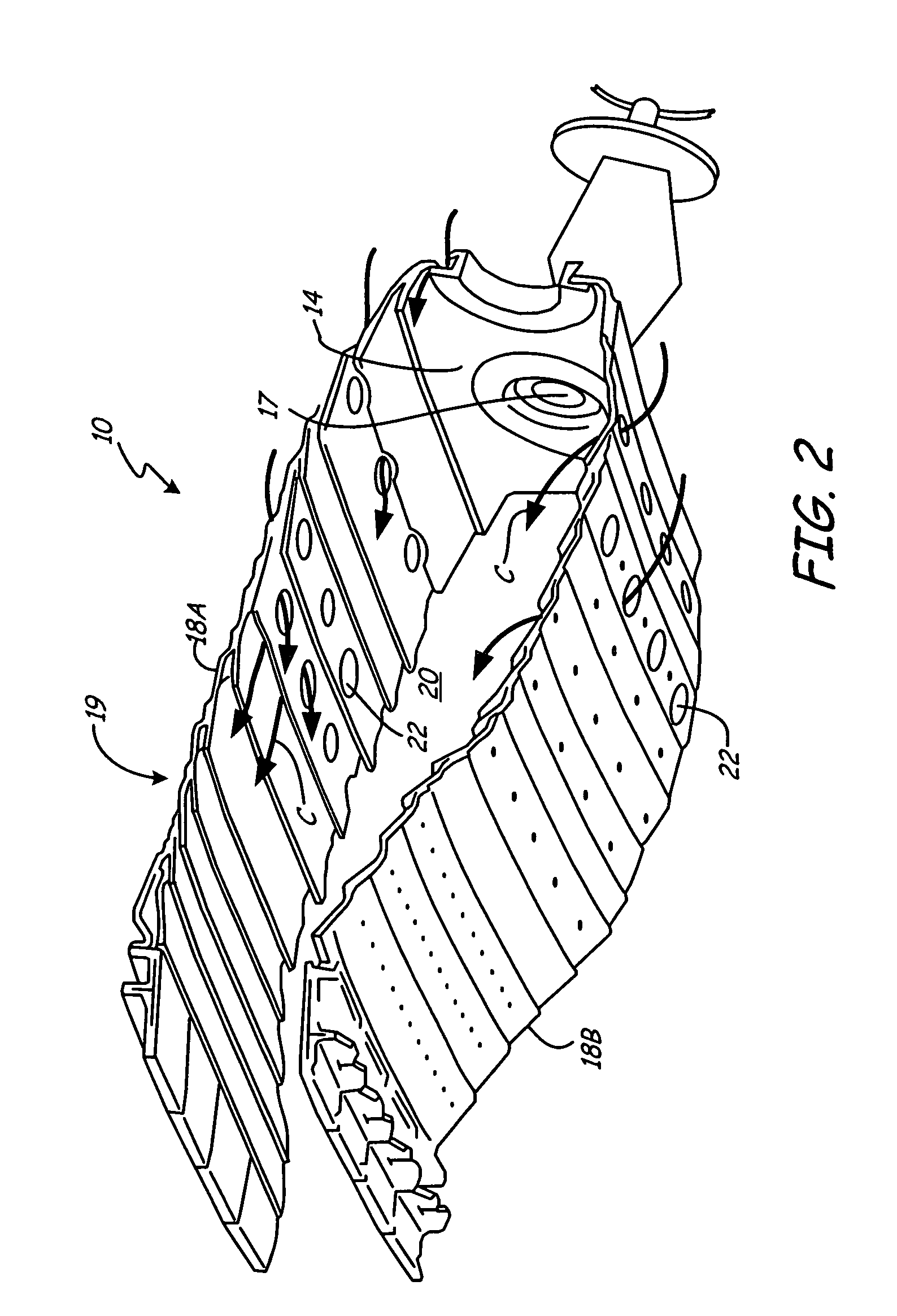Method for control of thermoacoustic instabilities in a combustor
a combustor and thermoacoustic instability technology, applied in the ignition of the turbine/propulsion engine, engine starters, lighting and heating apparatus, etc., can solve the problems of affecting the stability of the combustor, structural damage to the combustor components, and thermoacoustic instabilities, so as to reduce the effect of thermoacoustic instabilities
- Summary
- Abstract
- Description
- Claims
- Application Information
AI Technical Summary
Benefits of technology
Problems solved by technology
Method used
Image
Examples
Embodiment Construction
FIG. 1 is a diagram illustrating an end view of an annular combustor 10 of an aircraft engine having bulkhead section 14. Attached to bulkhead section 14 is fuel manifold assembly 16, which includes a plurality of fuel nozzles 17 (as well as additional components not visible in FIG. 1). It should be noted that an annular combustor 10 is described for purposes of example and not for limitation, and that other types of combustors, such as cylindrical combustors, are also within the intended scope of the present invention.
Combustor 10 is configured to burn a mixture of fuel and air to produce combustion gases. These combustion gases are then delivered to a turbine located downstream of combustor 10 at a temperature which will not exceed an allowable limit at the turbine inlet. Combustor 10, within a limited space, must add sufficient heat and energy to the gases passing through the engine to accelerate their mass enough to produce the desired power for the turbine and thrust for the en...
PUM
 Login to View More
Login to View More Abstract
Description
Claims
Application Information
 Login to View More
Login to View More - R&D
- Intellectual Property
- Life Sciences
- Materials
- Tech Scout
- Unparalleled Data Quality
- Higher Quality Content
- 60% Fewer Hallucinations
Browse by: Latest US Patents, China's latest patents, Technical Efficacy Thesaurus, Application Domain, Technology Topic, Popular Technical Reports.
© 2025 PatSnap. All rights reserved.Legal|Privacy policy|Modern Slavery Act Transparency Statement|Sitemap|About US| Contact US: help@patsnap.com



